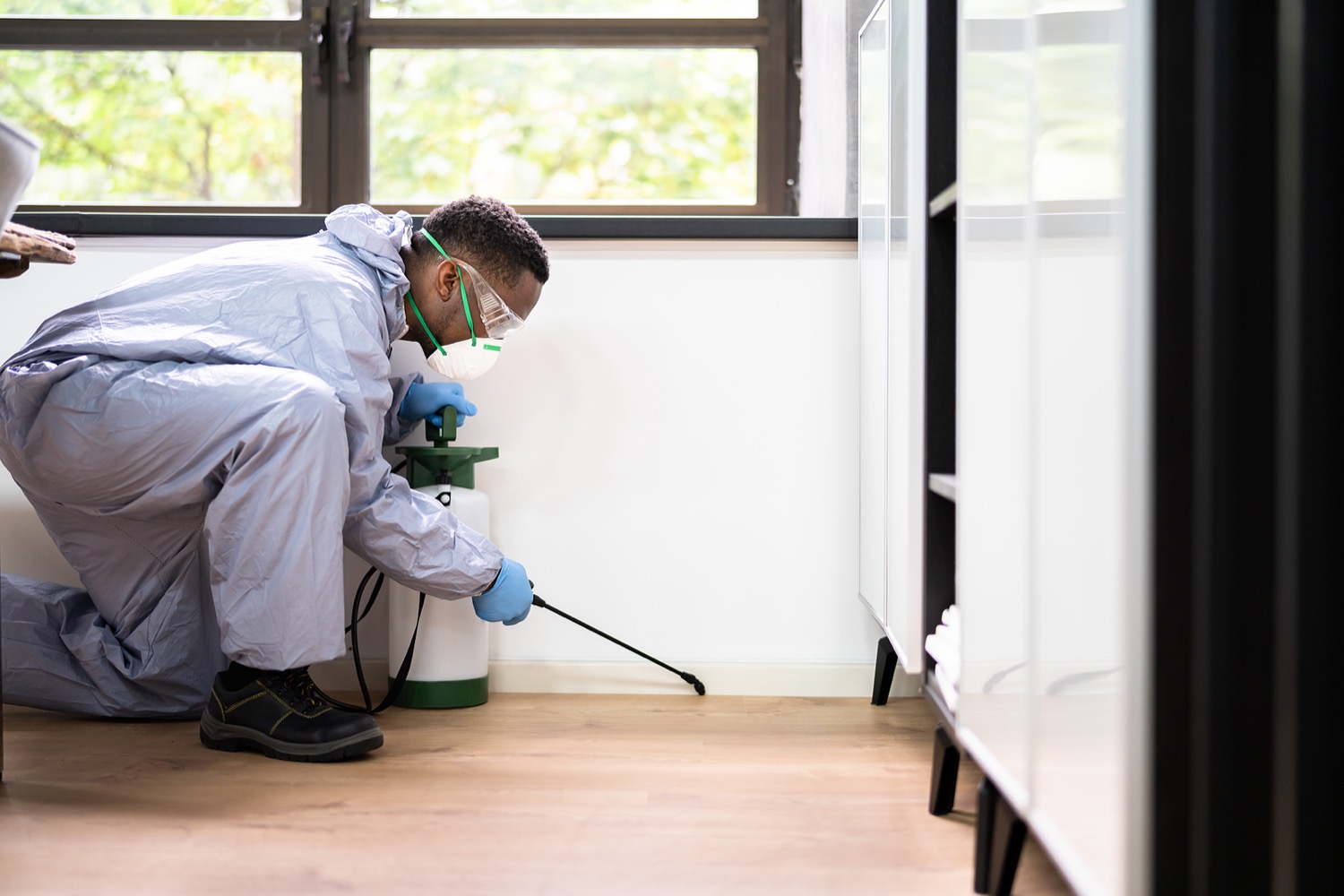A1 Bed Bug Exterminator Charlotte - Efficient and Economical Services
A1 Bed Bug Exterminator Charlotte - Efficient and Economical Services
Blog Article
Bed Bug Treatment Failure: Contrasting Chemical Vs. Non-Chemical Solutions
In the world of bug control, specifically when managing the relentless problem of bed bugs, the choice in between chemical and non-chemical treatment remedies can be an essential one. Both methods use distinctive advantages and drawbacks, influencing aspects such as performance, safety and security considerations, and overall cost. By checking out the nuanced information of each technique, a clearer understanding of which course to pursue in resolving a bed pest problem can be achieved.
Performance of Chemical Therapies
Chemical treatments for bed insect infestations have actually been commonly recognized for their fast and powerful effectiveness in eradicating these pests. When considering the performance of chemical therapies, it is critical to comprehend that they can offer a complete and quick solution to a bed pest problem.
Additionally, chemical therapies have the advantage of using residual results, suggesting that they can remain to eliminate bed bugs also after the first application. This residual action is particularly advantageous in combating any potential re-infestations. Additionally, the rapid activity of chemical therapies can bring alleviation to individuals facing serious bed insect invasions, enabling them to reclaim control of their space swiftly.
Safety And Security Issues With Chemical Solutions
One important element that needs cautious factor to consider when utilizing chemical services for bed bug treatment is guaranteeing the security of occupants and the environment. While chemical treatments can be efficient in eliminating bed pests, they might present dangers otherwise dealt with correctly. Among the main safety interest in chemical solutions is the potential injury they can cause to human health and wellness. Direct exposure to particular chemicals utilized in bed insect treatments can result in breathing issues, skin irritability, or other adverse responses, especially in people with pre-existing conditions or sensitivities. In addition, improper application or dose of chemical pesticides can result in harmful deposits sticking around in the cured area, posturing lasting health risks to passengers.
In addition, the ecological impact of chemical options is another considerable consideration. Some pesticides made use of in bed bug therapies may be dangerous to valuable pests, wildlife, and ecosystems if they leach right into the soil or water supply. It is important to make use of chemical treatments judiciously, adhering to security guidelines, and taking into consideration much less poisonous options to minimize these dangers and guarantee the efficient and risk-free monitoring of bed insect infestations.
Advantages of Non-Chemical Methods
Considering the prospective security concerns and ecological influence connected with chemical services for bed insect treatment, checking out non-chemical strategies provides a promising option with numerous distinctive advantages. Non-chemical treatments are eco friendly, as they do not add to air or water contamination, making them a sustainable selection for parasite control.
Additionally, non-chemical remedies can be efficient in targeting bed pests, consisting of hard-to-reach locations where chemical therapies may not permeate - A1 exterminators charlotte nc. Techniques such as warmth treatment, vacuuming, steam cleaning, and cushion encasements supply comprehensive obliteration without the usage of damaging chemicals.
Limitations of Non-Chemical Treatments

Furthermore, non-chemical treatments commonly call for multiple applications to accomplish successful eradication. This can be lengthy and might not constantly ensure total elimination of all bed insects and their eggs, specifically in covert or hard-to-reach places.
In addition, the success of non-chemical treatments greatly counts on proper execution and thoroughness, which can be challenging for individuals without professional know-how. Poor application of non-chemical techniques may result in incomplete obliteration, leading to persistent invasions and the requirement for additional treatments.
Consequently, while non-chemical therapies have their advantages, it is crucial to recognize these restrictions and consider them when figuring out one of the most effective strategy for managing bed pest problems.
Cost Comparison: Chemical Vs. Non-Chemical Options
Offered the restrictions connected with non-chemical treatments, an essential facet to evaluate in the context of bed insect management is the expense comparison between chemical and non-chemical choices. Chemical therapies usually include the application of insecticides by specialists, which can range from $250 to $900 per room, depending on the seriousness of the infestation and the dimension of the location to be treated. In contrast, non-chemical treatments like heat treatment or vapor can be more costly, with expenses ranging from $1,000 to $6,000 pop over to this web-site for a whole home. While the preliminary price of chemical therapies might seem reduced, multiple treatments may be required to completely get rid of the problem, possibly increasing the total cost. On the other hand, non-chemical options may supply a more eco-friendly and sustainable option, although they can be cost-prohibitive for some individuals. Eventually, when taking into consideration the expense of bed bug treatment choices, it is very important to consider the ahead of time costs against the effectiveness and lasting sustainability of the selected technique.
Conclusion

Taking into termite control systems consideration the prospective safety concerns and ecological impact connected with chemical options for bed insect treatment, exploring non-chemical approaches offers an encouraging option with numerous unique advantages.Provided the restrictions linked with non-chemical therapies, an essential facet to assess in the context of bed pest monitoring is the cost contrast in between chemical and non-chemical options. In comparison, non-chemical therapies like warm therapy or vapor can be much more costly, with expenses ranging from $1,000 to $6,000 for an entire home. While the preliminary price of chemical therapies might seem lower, several treatments might be called for to fully get rid of the problem, potentially boosting the total expense.In conclusion, when comparing chemical and non-chemical bed pest therapy options, it is important to consider performance, safety and security, benefits, limitations, and expense.
Report this page